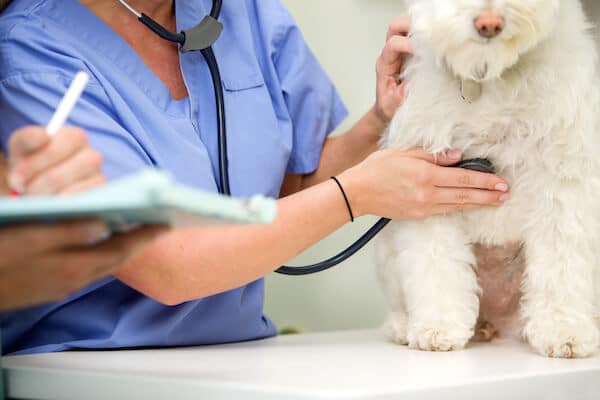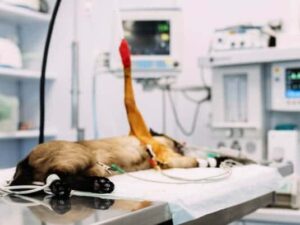
Menu


£255.00 Ex VAT
Start: 5th Mau 2025
CPD: 15 hours (UK), 15 points (AUS, NZ) over 6 / 8 weeks
Level: Intermediate / Advanced
This CPD course is aimed at veterinary nurses working in general practice / referral practice
Learning objectives
After completion of this week, participants should be able to:
Learning materials this week:
(released on Monday morning for on demand learning until the course ends – approximate timings)
Learning objectives
After completion of this week, participants should be able to:
Learning materials this week:
(released on Monday morning for on demand learning until the course ends – approximate timings)
Learning objectives
After completion of this week, participants should be able to:
Learning materials this week:
(released on Monday morning for on demand learning until the course ends – approximate timings)
Learning objectives
After completion of this week, participants should be able to:
Learning materials this week:
(released on Monday morning for on demand learning until the course ends – approximate timings)
Learning objectives
After completion of this week, participants should be able to:
Learning materials this week:
(released on Monday morning for on demand learning until the course ends – approximate timings)
Learning objectives
After completion of this week, participants should be able to:
Learning materials this week:
(released on Monday morning for on demand learning until the course ends – approximate timings)
This course will be fully tutored by Colette Jolliffe and will consist of 15 hours of CPD given in various formats, including tutorials, tasks, case studies, forum discussions and quizzes. This course is tutored for 6 weeks, followed by a two week extension of untutored ‘catch up’ time, before the course officially ends.
All delegates will then have unlimited lifetime access to the learning material for future reference

Colette Jolliffe BVetMed, CertVA, DipECVAA, FRCVS
European and RCVS Recognised Specialist in Veterinary Anesthesia and Analgesia
Head of Anaesthesia at Anderson Moores Veterinary Specialists
Colette qualified from the Royal Veterinary College, University of London in 1996, and worked for four years in small animal general practice. She spent the next two years working in industry during which time she developed an interest in anaesthesia, analgesia and ethics. She started a residency in veterinary anaesthesia at the Animal Health Trust in 2003, gaining the RCVS Certificate in Veterinary Anaesthesia in 2004 and the European Diploma in Veterinary Anaesthesia and Analgesia in 2006. She became Head of Anaesthesia at the Animal Health Trust in 2009 and remained there until the Trust’s closure in 2020. She became a Fellow of the RCVS in 2022 and is now Head of Anaesthesia at Anderson Moores Veterinary Specialists
This online course is worth 15 hours of CPD.
A certificate will be available from the ‘My Courses’ section, for you to download and print, once you have completed the course. A permanent record of your total CPD hours will also be recorded in your account section.
The Australian Veterinary Nurse and Technician (AVNAT) Regulatory Council has allocated 15 AVNAT CPD points to this continuing education activity.
This course is also recognised by the New Zealand Veterinary Nursing Association (NZVNA) as providing 15 CPD points.

Upon purchase you will be registered to attend the course, for 6 weeks from the start date. The course will consist of various interactive tasks and lessons, including quizzes, case studies, forum discussions and further reading material.
The course is fully tutored, with new material will be provided each Monday morning, but the onus will be on the individual delegate to ensure that all tasks are fully complete. The certificate will only be issued at the end of the course when all tasks have been accomplished. Fewer CPD hours will be awarded at the the end of the course if there are unfinished tasks or there has been no contribution to the discussion forum, for example
The course is fully flexible, and there are no weekly ‘deadlines’ – the lessons and tasks may be completed whenever is convenient for each delegate, and any live lessons with be recorded and made available later that same day. Furthermore, all the course material will be available for a further 2 weeks, to allow delegates the opportunity to catch up on missed lessons and tasks, or to take the opportunity to delve further into the suggested reading texts. Please note however, that the course will not be tutored by the speaker during these final two weeks, but the time spent will count towards your CPD hours
After 8 weeks, the course will be complete and there will be no further opportunity to gain the certificate or CPD hours, however, you will have unlimited lifetime access to the tutorials, further reading and quizzes for future reference. If you make any personal notes during the course using the ‘take notes’ app, these will be saved, along with your certificate and CPD record for permanent access in ‘My CPD’
This course has been listed as ‘Intermediate / Advanced’ level
All of our courses are aimed at veterinary nurses in general practice, but everyone who works in the veterinary profession is very welcome to attend, whether you are a clinical receptionist, veterinary surgeon, student nurse or have been a qualified nurse for over 20 years!
The courses are not formally assessed for skill level, so the following CPD levels are just a rough guide to help you decide if a course may be more or less suitable:
Introduction
– maybe most suitable for qualified nurses in general practice approaching a new topic or looking for a refresher course
Intermediate
– maybe most suitable for qualified nurses in general practice along with referral / specialist nurses looking for a refresher course
Advanced
– maybe most suitable for referral / specialist nurses and highly experienced qualified nurses in general practice
You will earn 255 Pawprint Points (£25.50 website credit) when you purchase this course
Our loyalty scheme rewards you with 10% in website credit to spend on future courses. Choose pay with Pawprint Points during checkout.
Please ask your practice manager or accounts department to visit the website, register an account in their own name, and during checkout, complete the ‘delegate name’ and ‘delegate email’ sections with your personal details. We will then register you a personal account on your behalf, and transfer the course booking over to your new personal account. We will of course email you all the information you need to access this new account and your CPD course.
If you need an invoice and no other payment method is available to you, then please email [email protected] with all the following information:
Please note the following:





Excel CPD specialises in providing online CPD for veterinary nurses and technicians all over the globe. Our courses are also fully approved by AVNAT for our nursing colleagues in Australia and New Zealand.
©2009-2024 Excel CPD | Terms and Conditions | Privacy Policy
Marie Anguige –
Clear and concise information. Good use of photos and videos to help. Really enjoyed the wordsearchs!! Very informative.
Rated: Advanced level
(Referral or specialist RVN – UK)
Alice Karvot –
Really enjoyed the course, found I learnt so much and have better knowledge + tools to help implement better care + protocols in practice. The only aspect I didn’t enjoy was that I found some of the crossword answers were particularly specific and struggled to answer some even with multiple vets in my practice having a look! However, enjoyed the structure of the course, the content and the quizzes. The further reading had some useful articles.
Rated: Intermediate level
(Qualified RVN in general practice <5 years - UK)
Shanie Lamb –
Very informative, enjoyed the quizes/crosswords at the end of each module. I appreciated the feedback given from the written assignments was very thorough and constructive.
Rated: Intermediate level
(Qualified RVN in general practice >5 years – UK)
Toni O’Donovan –
A really interesting, in-depth course with up to date information and a very knowledgeable tutor
Rated: Intermediate level
(Qualified RVN in general practice <5 years - UK)
Ciara Graham –
While I enjoyed the course and learned a lot I felt like it was aimed more towards anaesthetists or nurses in referral practices. Coming from a 1st opinion practice where nurses do not preform nerve bocks I felt like a lot if that went over my head. It has certainly helped me to create better plans for anaesthesia and I am already placing new protocols and new ideas into practice
Rated: Advanced level
(Qualified RVN in general practice >5 years – UK)
Kelly Wilkins –
informative and easy to follow
Rated: Introduction / Intermediate / Advanced level
(Qualified RVN in general practice >5 years – UK)